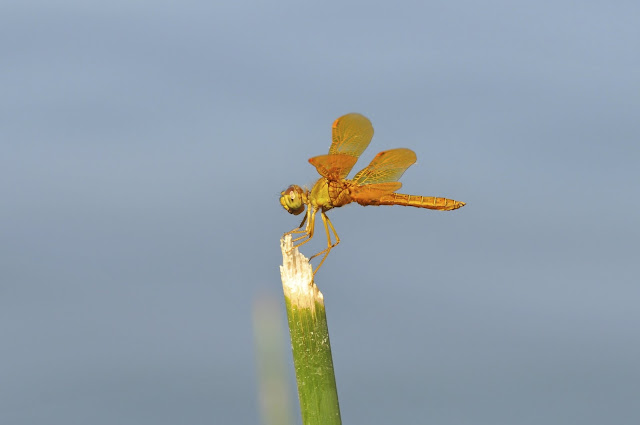The temperature was a fairly mild 42 ˚F, and it was nice and sunny, with just a slight breeze. We checked all the likely spots—the benches, the fence, the face of the dam—but came up empty. It seemed that the recent string of cloudy and rainy days had terminated the dragonfly season in Anacortes. But then I noticed some motion on the trunk of a tree far back from the shore. Looking carefully, I spotted a male (of course) Autumn Meadowhawk basking in the sun. Here's a photo of him:

Getting a bit closer we can see him in detail:

I say 'of course' when referring to the fact that we saw a male, because we haven't seen a female for several weeks. It really seems that at the end of the season the population becomes asymmetric, with males far outnumbering females. This applies not only to the Autumn Meadowhawk, but to the darners we see at Little Cranberry Lake as well.
We returned home and enjoyed a lovely sunset:

The sunset was all the more satisfying knowing one of our friendly dragonflies was still alive and well at Little Cranberry Lake.
















































